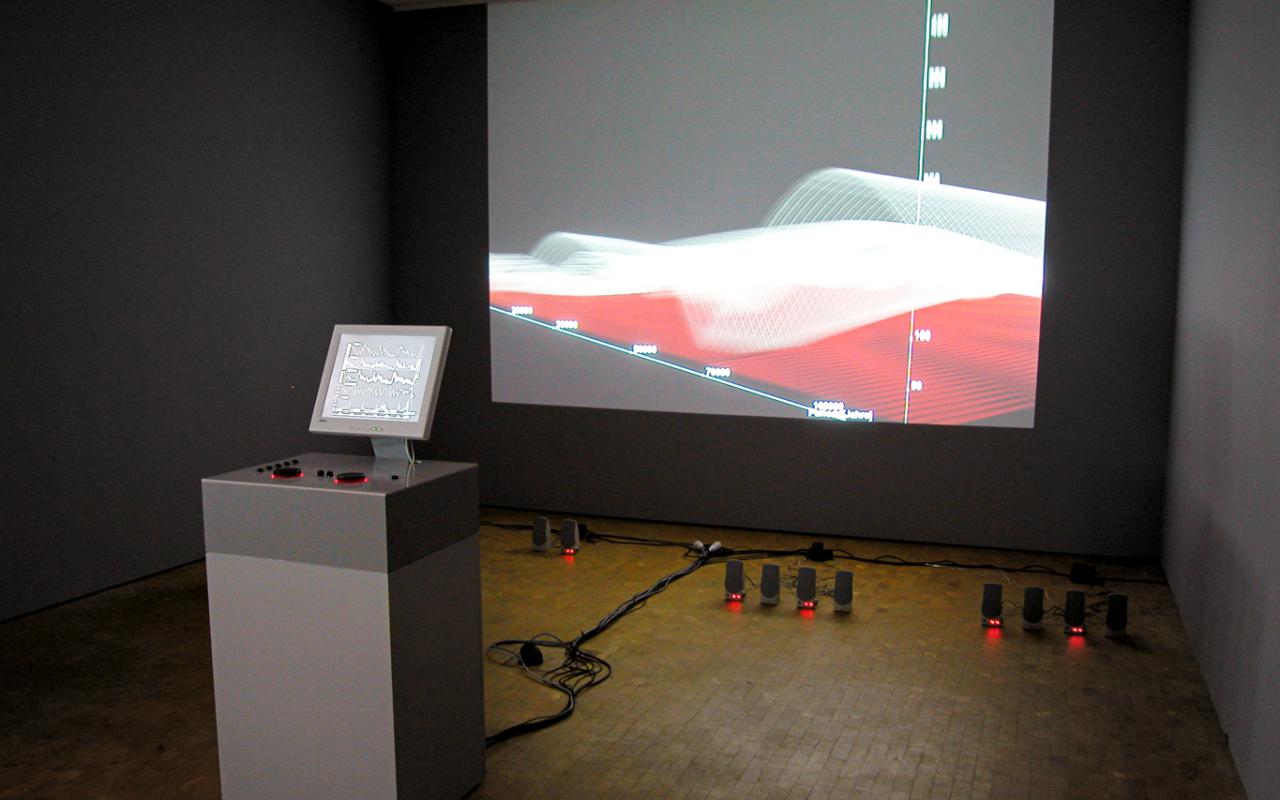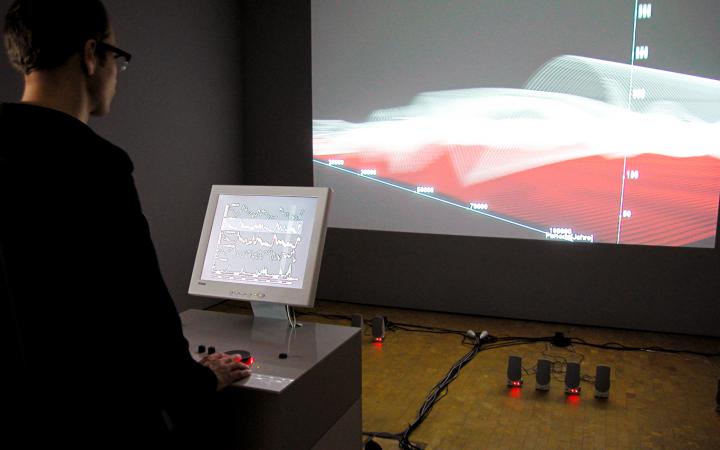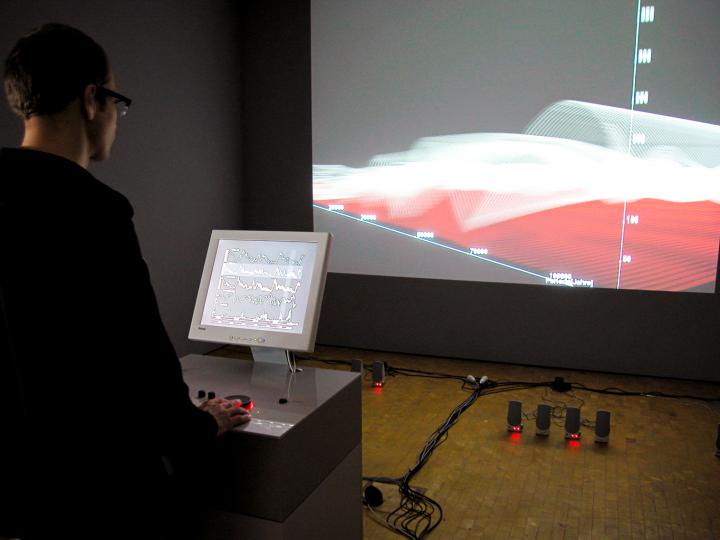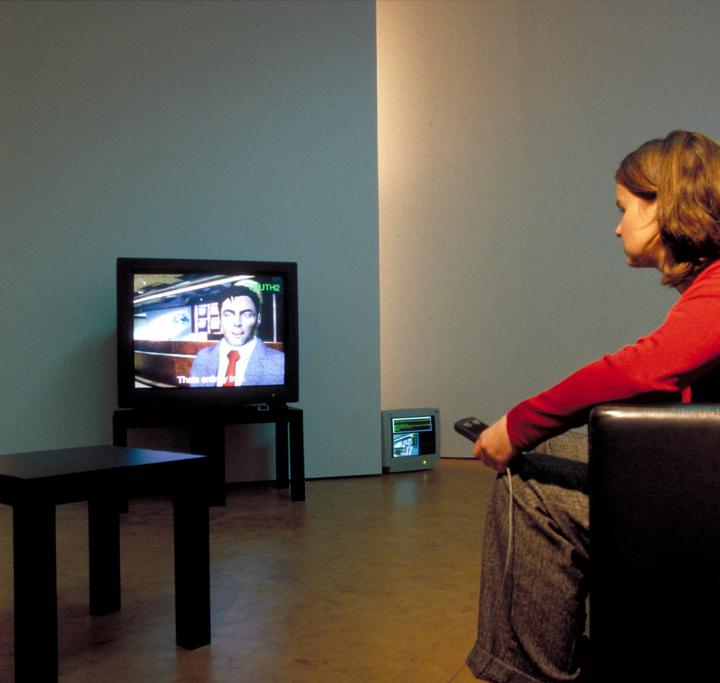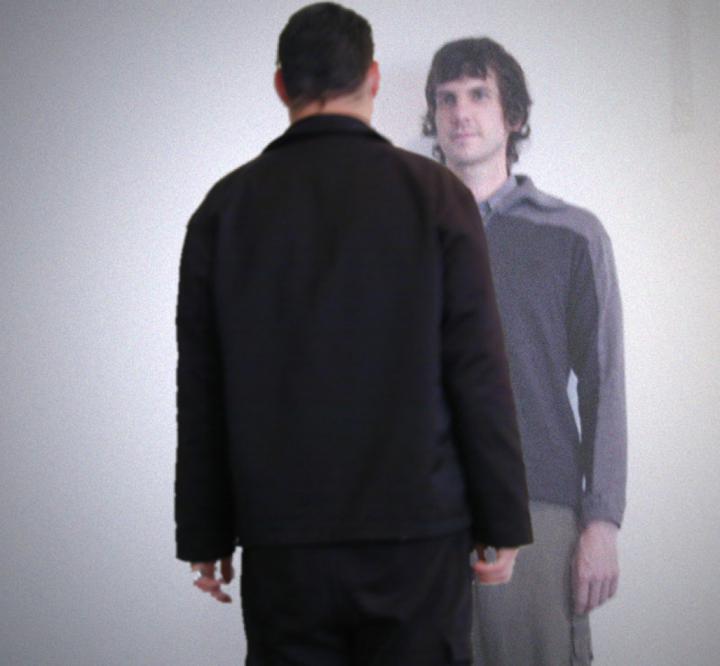Ramón Guardans, Götz Dipper, Matthias Gommel, Adolf Mathias, Martin Schüttler, Renata Sas
Algorithmic Echolocation
2003
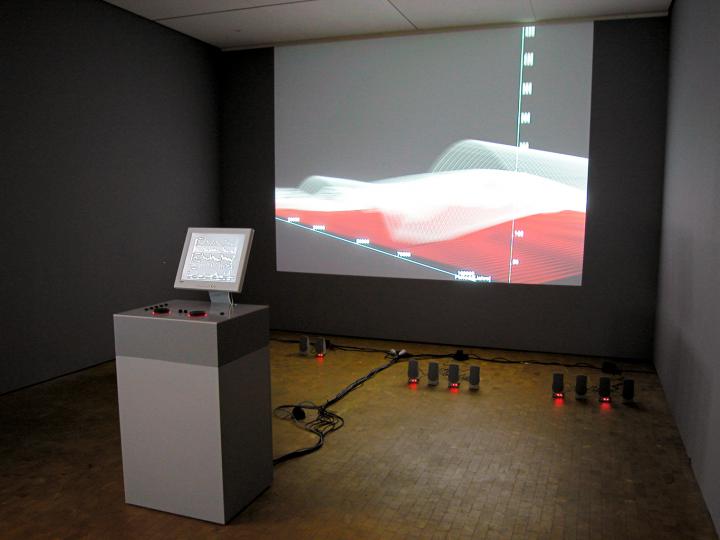
- Artist / Artist group
- Ramón Guardans, Götz Dipper, Matthias Gommel, Adolf Mathias, Martin Schüttler, Renata Sas
- Title
- Algorithmic Echolocation
- Year
- 2003
- Category
- installation, computer-based, Sound installation, Video installation
- Material / Technique
- Computer-based installation; room with interface console, 1 projection screen, descriptive text and diagram; technique: computer I: PC, operating system: Linux, computer II: Mac mini, operating system: OSX; programming language: Pure Data, other technical devices: MIDI controller, TFT monitor, audio interface (8-channel), 14 active speakers, projector
- Dimensions / Duration
- Installation dimensions variable
- Collection
- ZKM | Center for Art and Media
- Description
»Algorithmic Echolocation« is a collaboration of natural scientists, computer programmers, graphic designers, and sound experts from the ZKM | Karlsruhe, of Soundplots and the Medialab Madrid. The installation focuses on the analysis of data from the Vostok Research Station in East Antarctica.
The ice core drilling hole of the Russian Antarctica station is more than 3700 meters deep, and is an important climate archive, which provides information about changes in the chemical composition of Earth’s atmosphere. Analysis of the ice layers yields climatic information about temperatures, dust particles in the ice, or the composition of atmospheric oxygen. The ice core is a record of past conditions in the environment that stretches back 420,000 years.
»Algorithmic Echolocation« transforms the Vostok data into acoustic signals, and evaluates them in the sense of echolocation. Based on echolocation in the animal world, which is utilized amongst others by dolphins, bats, and whales to localize, for example, conspecifics via sound waves, »Algorithmic Echolocation« is algorithmic processing of signals. In the form of graphics and sounds, this is depicted as a dynamic projection on a wall. Visitors can explore interactively the interpretation of the measured data. To navigate the moving graphics, a control panel is provided. The intention of »Algorithmic Echolocation« to transform signals in a way that they become analyzable and thus accessible to human perception, has a very long history. Since ancient times human beings have constructed abstract information to help them find better orientation in the world.
